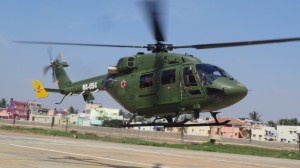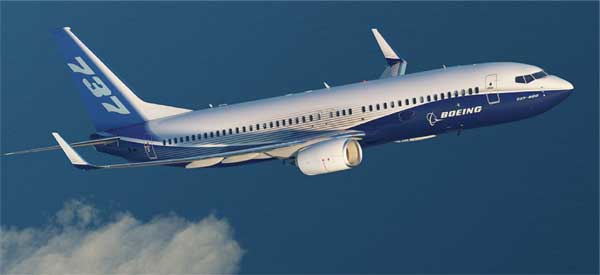“Make in India” has been around for some time now, both as a slogan and as a rallying point for industrial lobbies. As far as the aerospace industry is concerned, the single major act of faith the government can perform is to level the playing field for private players. The only way that can be done is to permit fair competition between PSEs and private industries so that their individual strengths are pitted against each other in ‘May the best man win!’ gladiatorial, free market arenas. The private sector has amply demonstrated its capability and willingness to outdo public sector achievements. All it needs is a chance to do so.
Private entities entered the fray late due to the patronage given by government to the PSEs at the cost of private entrepreneurship…
The Economic Survey 2015-16 released earlier this year reveals that, at the end of the previous financial year, the accumulated losses of sick Public Sector Enterprises (PSEs) added up to Rs 1.04 lakh crore. This figure does not account for inflation since the individual years that these losses were incurred in. During the 1950s, in its wisdom, the leadership of our newly independent country had decided that the public sector route was inevitable if progress was to be made. While the intent was indeed laudable, unfortunately, the baggage of the colonial past led to a public sector culture that was steeped in government protectionism, hobbling bureaucratic procedures resulting in considerable internal inefficiencies. There is no authentic figure available for the summated investment into PSEs but, as can be judged from the loss indicated above, a colossal amount of taxpayers’ money has been pumped into them. Even for those PSEs that are not loss-making, the dividends, in terms of results, are unfortunately not very impressive.
Government investment in terms of subsidised or free land, largely imported machinery, hangars, test-beds and other infrastructure, liberal salary and perks, has been huge. The work culture is one of “union working hours” in contrast to private corporate organisations where working hours are fairly ‘flexible’, in favour of the management and productivity! Incidentally, the large and potent unions, that the PSEs were permitted to spawn, are one of the major reasons for the government’s impotency in dealing with our ailing PSEs whose productivity is under a big interrogation mark. However, as Tennyson put it, “the old order changeth, yielding place to new.” There is a change in the last decade or so in the aerospace industry inasmuch as private participation is on the rise. The capability is evident, but there are impediments to the growth of private enterprise in the Indian aerospace industry.
Civil Aircraft
The aerospace industry is characterised by its appetite for very high levels of technology, lingering project life cycles and huge costs. The route India followed has been termed by some as “protectionist import substitution”. The nation was content with collaboration with foreign Original Equipment Manufacturers (OEMs) for licensed-production of aircraft the country needed. Indigenous development was not significant and was confined to licensed-production of military aircraft by Hindustan Aeronautics Limited (HAL). On the other hand, the developmental strategy adopted by China which also embarked on its aerospace ventures at around the same time, has produced three major civil aircraft programmes including the 168-seater, single-aisle C-919 which is causing some anxiety to Airbus and Boeing as it threatens to give tough competition to the Airbus A-320 and the Boeing 737.
 India has no civil commercial aircraft of indigenous design to boast of. National Aerospace Laboratories (NAL) had reached the prototype stage with the Saras 14-seater twin turboprop aircraft. However, after the loss of one prototype in a crash, the programme came to a grinding halt. Currently, the NAL is awaiting fresh funding from the government for rejuvenation of the Saras project.
India has no civil commercial aircraft of indigenous design to boast of. National Aerospace Laboratories (NAL) had reached the prototype stage with the Saras 14-seater twin turboprop aircraft. However, after the loss of one prototype in a crash, the programme came to a grinding halt. Currently, the NAL is awaiting fresh funding from the government for rejuvenation of the Saras project.
Private entities entered the fray late due to the patronage given by government to the PSEs at the cost of private entrepreneurship. Mahindra Aerospace, started in 2008 by the Mahindra Group, is the leader in civil aircraft design in India. It produces the eight-seater Airvan-8 at its facility in Australia and is developing the ten-seater Airvan-10 transport aircraft but has not been able to convince the Directorate General Civil Aviation (DGCA) to market the aircraft in India yet. The company has also developed the C-NM5, a five-seater utility aircraft in collaboration with NAL. Designed in India, the first prototype took to the air in 2011 at the aircraft production facilities of Mahindra Aerospace in Australia.
India has no civil commercial aircraft of indigenous design to boast of…
It is planned to be brought to Kolar airfield for its certification programme after which it will be produced by the Mahindra Aerospace facility near Bangalore. While the Airvan-10 is a turboprop aircraft, the Airvan-8 and the C-NM5 are powered by piston engine. The implication is that while the former uses Aviation Turbine Fuel (ATF), the other two use AVGAS which is available in India at only a handful of airports. Most of the small Tier II/III airports where these aircraft can land, would not have AVGAS stored and hence their utilisation would be severely limited as they would have to carry fuel onboard for its return flight.
Another aircraft, the Hansa-3, has been designed by NAL and is produced by Taneja Aerospace and Aviation Limited (TAAL) mainly for use by flying clubs for training and for private transportation. HAL has recently sent out a Request for Information (RFI) for a collaborator to build in India, a 50 to 80-seater, medium-sized, twin turbofan/turboprop dubbed as the Regional Transport Aircraft (RTA) to serve regional and remote area connectivity needs of civil aviation. Foreign collaboration with Transfer of Technology is the objective and some Indian private players can hope to be roped in as Indian collaborators. However, the Transfer of Technology would be meaningless if it does not include engine technology, an area in which India lags behind badly. As of now, it looks unlikely that any engine manufacturer would part with leading edge technology.
While on civil aircraft, the Dornier Do 228, a 19-seater twin turboprop aircraft needs to be mentioned. HAL has produced 130 of the type under license and continues to do so, while Tata Advanced System Limited (TASL) is involved in complete structural assembly and parts manufacturing for Dornier Do-228NG for RUAG, a Switzerland-based aerospace company. The deal to manufacture the wings and fuselage of its Dornier 228 aircraft came TASL’s way as RUAG felt that it was the best partner. Production of the Dornier 228 aircraft is expected to begin in July this year. Although HAL-produced Dorniers were used for military purposes in India, the aircraft has dual use and the experience of working on it, is valuable for HAL and TASL both, the lack of Transfer of Technology notwithstanding.
In the helicopter arena, HAL has had success with the Dhruv family of utility helicopters and is actively working on a combat version as well…
Military Aircraft
The history of military aircraft development in India has been even more dismal than that of civil use aircraft. As far as combat aircraft are concerned, HAL has been involved in licensed-production of the MiG series, the Jaguar and more recently, the Su-30 MKI and the Hawk trainer, but without Transfer of Technology. Its own design effort was the HF-24 Marut in the 1960s which was not a very impressive aircraft although it was used in combat by Indian Air Force (IAF). More recently, it has produced an Aeronautical Development Agency (ADA) design, the Light Combat Aircraft (LCA) Tejas which, despite not being what the IAF and the Indian Navy would ideally like to have, is being thrust upon them. The current version handed over to IAF is not combat ready and even the future versions are unlikely to satisfy the IAF.
So where does private enterprise fit into our combat aircraft manufacturing capability? Unfortunately, nowhere. With the contract for 36 Rafale jets hanging fire and the Fifth Generation Fighter Aircraft (FGFA) joint venture with Russia teetering on an edge, the IAF’s plaintive cries about not having adequate resources to fight a two-front war need attention. The IAF has 33 combat squadrons against an authorisation of 42. Would involving private entities in military aircraft production solve the problem? Probably in the long run, yes. However, it will take them possibly a decade or more to build the infrastructure and to absorb the technologies involved. While the airframe and structural requisites would be comparatively easy to master, power plant technology would remain elusive for longer periods due to its more complex nature and due to the time lost so far by HAL and R&D in that field led by Gas Turbine Research Establishment (GTRE). The ideal solution would be for private participation in a joint venture with a leading edge aircraft and engine manufacturer which includes provisions for Transfer of Technology. The offers by Boeing, Saab and Lockheed Martin to build modern combat aircraft in India are possible opportunities, to be weighed with economic and political considerations.
 As far as transport aircraft are concerned, HAL also licensed-manufactured the Avro HS-748, 72 for the IAF and 17 for Indian Airlines, but there has been no learning from this experience as it was just license based. In the helicopter arena, HAL has had success with the Dhruv family of utility helicopters and is actively working on a combat version as well as a Light Utility Helicopter (LUH) for military use.
As far as transport aircraft are concerned, HAL also licensed-manufactured the Avro HS-748, 72 for the IAF and 17 for Indian Airlines, but there has been no learning from this experience as it was just license based. In the helicopter arena, HAL has had success with the Dhruv family of utility helicopters and is actively working on a combat version as well as a Light Utility Helicopter (LUH) for military use.
Capability of the Aerospace Industry: Private Sector
In the wake of the liberalisation in the early 1990s, private participation in the aerospace sector made modest beginnings and is steadily growing to impressive dimensions. As this section will show, we have more foreign admirers and buyers of our private aerospace entrepreneurship than within India. Of all private contenders, TASL is perhaps the one nearest to acquiring the capability to manufacture full aircraft, radar s and Unmanned Aerial Vehicles (UAVs). TASL has tied up with Airbus for the manufacture of C-295 transport aircraft, a replacement for the Avro HS-748. TASL’s partnership with Airbus for the C-295 that would include supply of 16 aircraft in fly-away condition and 40 to be built in India would be a major breakthrough for private participation in the Indian aerospace industry.
In the wake of the liberalisation in the early 1990s, private participation in the aerospace sector made modest beginnings and is steadily growing…
TASL has become a significant player in the global aerospace and defence market, becoming the premier manufacturing partner for global OEMs, including Boeing, Airbus, Sikorsky, Lockheed Martin, Pilatus Aircraft Ltd, Cobham Mission Equipment and RUAG Aviation. Its facility in Hyderabad produces aircraft parts from all these big names and the wings and fuselage of the Pilatus PC-12 aircraft. Boeing and TASL had signed a framework agreement last July to collaborate in aerospace and defence manufacturing and potential integrated systems development opportunities, including Unmanned Aerial Vehicles.
TASL is already on contract to manufacture aero-structures for Boeing’s CH-47 Chinook and AH-64E Apache helicopters. It is already producing UAVs for military use in India and is the lowest bidder for Indian Navy’s Surface Surveillance Radar (SSR). In addition, it has tied up with NAL for the development and production of Integrated Globalbus Avionics Processing System (IGAPS) popularly called ‘Mission Computer’, a sophisticated state-of-the art onboard computing system designed as a key electronic system on aerospace and defence platforms for subsystem integration and control. Its variants will be manufactured in India for Indian and global markets. Reportedly, two other Tata Group companies, Tata Advanced Materials Ltd and TAL Manufacturing Solutions, have delivered power and mission equipment cabinets and auxiliary power unit door fairings for the P-8I long-range maritime surveillance aircraft and floor beams for the Boeing 787-9 Dreamliner.
Reliance Defence Limited is a wholly owned subsidiary of Reliance Infrastructure Limited, one of Anil Ambani’s Reliance Group’s companies. Reliance Defence itself has 11 subsidiaries in niche segments of defence and aerospace manufacturing with the stated aim of acquiring capabilities and developing in-house expertise in air combat vehicles, aircraft and avionics, missiles, unmanned systems and C4ISR systems et al. Through partnerships with leading international OEMs, it is working towards consummating “Make in India” and has set up the Dhirubhai Ambani Aerospace Park spread over 400 acres land at Multi-modal International Cargo Hub and Airport at Nagpur (MIHAN) planned with an aim to create a comprehensive eco structure through backward integration for indigenous manufacturing of aerospace components.







Hal marut was not impressive oh so a country just entering the field of aviation design is supposed to develop a 5th generation aircraft in the 1960s out of scratch, and yes HAL is the devil but pray tell the competance of air force engineers atleast army people have a corps of indigenisation what does the air force have huh. Have you seen your training institutions 16 tetra for example first repair your org then comment about others
Very knowledgeable article. Engagement with private sector fully is the need of the hour. Only it can make India capable of manufacturing defence equipment indigeneously. Private sector can pay attractive salaries to their employees and therefore attract best talent of the country, while defence psus cannot pay hefty amounts of salaries to their employees; plus dpsus have to give reservation in jobs too.